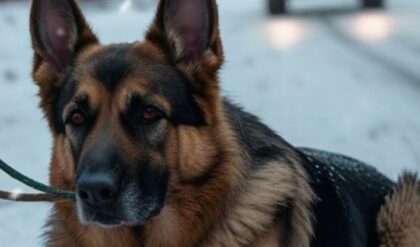 Lockheed’s iconic P-38 Lightning could reach speeds of more than 400 mph and could fly distances of up to 1,700 miles (or more with drop tanks). Its twin-tails were unmistakable to friend and foe alike. (Image source: WikiCommons)
Lockheed’s iconic P-38 Lightning could reach speeds of more than 400 mph and could fly distances of up to 1,700 miles (or more with drop tanks). Its twin-tails were unmistakable to friend and foe alike. (Image source: WikiCommons)
“The P-38 made its greatest contributions in the war with Japan. Its tremendous range proved particularly effective in the open expanses of the Pacific.”
IT WAS APRIL 14, 1943. U.S. intelligence had just cracked a coded enemy transmission that revealed the commander of the Imperial Japanese Navy, Admiral Isoroku Yamamoto, would be flying from Rabaul, New Guinea to Balalae in the Solomon Islands in four days’ time. Two medium bombers would transport the admiral and his staff; six fighters were to fly escort.
Recognizing the opportunity to eliminate one of Japan’s top commanders and the architect of the 1941 attack on Pearl Harbor, U.S. admiral Chester Nimitz ordered a mission be hastily organized to ambush and destroy Yamamoto’s plane. The plan was codenamed Operation Vengeance.
With the nearest suitable airfield from which to launch an intercept nearly 500 miles from the target’s known flight path, it was clear that only one aircraft in the U.S. arsenal had both the combat radius and dogfighting ability to carry out the mission: the Lockheed P-38 Lightning.
Originally designed to meet a U.S. Army Air Corps requirement for a high-altitude, long-range interceptor, the distinctive-looking, twin-engined warbird seemed almost purpose-built for the task at hand.
Eighteen P-38Gs from the 347th Fighter Group would carry out the assignment: four to destroy the bombers and 14 more to provide cover from enemy fighters. The entire formation was to fly from Guadalcanal’s Kukum Field to Balalae at no more than 50 feet above the waves to avoid radar detection. They’d also need to observe strict radio silence. As the Lightnings approached the target area, the plan called for them to pop up to 18,000 feet and pounce on the unsuspecting enemy aircraft.
The group took off just after dawn on April 18. Although two of the planes were forced to turn back due to mechanical problems, the 16 remaining birds reached the objective in a little more than two hours, arriving just one minute ahead of schedule. With the enemy flight spotted, the P-38s immediately sprung the trap.
As expected, the Japanese fighters peeled off to intercept the attackers, leaving the four designated Lightnings to pick off the unescorted transports. Both targets were blasted from the sky — one was chased out over the Solomon Sea where it slammed into the water; the other plane, which carried Yamamoto, was shot up and broke apart over the jungle. The admiral’s bullet riddled body was thrown clear of crash. He was found the following day still strapped into his chair and clutching his sword.
Operation Vengeance was perhaps the most famous intercept mission of the Second World War. What’s more, it solidified the P-38s reputation as one of history’s most versatile and deadly warbirds.
Here are 11 amazing facts about this remarkable aircraft.
 A prototype P-38. At the time of its development, few before had seen a military plane quite like it. (Image source: WikiCommons)
A prototype P-38. At the time of its development, few before had seen a military plane quite like it. (Image source: WikiCommons)
It was a radical departure from conventional warplane design
The only American fighter to be in continuous production throughout America’s involvement in the Second World War, the story of the P-38 Lockheed Lightning actually began in 1937. That’s when the U.S. military put out a call for an all-metal, high-altitude fighter capable reaching 360 mph and able to climb to 20,000 feet in under six minutes. The California-based aircraft manufacturer Lockheed, despite never having built a single warplane, wanted in on the bid. In order to fulfil the air corps’ considerable requirements, the firm’s engineers opted for a twin-engine design. Their prototype featured a ground-breaking twin-boom layout to house a pair of counter rotating 1,000-hp 12-cylinder turbo-charged Allison engines. The double-nacelle engine construction resulted in the plane’s cockpit and guns being positioned in a centre-wing pod with the entire airframe supported by a tricycle landing gear. Although unconventional, the unique layout provided some unexpected benefits. By positioning the weaponry just forward of the pilot, instead of on the wings like most single-engine fighters of the era, gunnery accuracy was greatly improved. In fact, other warplanes had to fine tune their wing-mounted guns to fire slightly inward. The criss-crossing bullet streams would meet in a pre-sighted “convergence zone” at a fixed distance in front of the aircraft. In order to hit an enemy, pilots had to maneuver their aircraft to bring targets into this deadly envelope. P-38 pilots could simply aim ‘down the barrel’ of their guns, and hit any target out to 1,000 yards.
 A P-38 assembly line in Burbank. (Image source: WikiCommons)
A P-38 assembly line in Burbank. (Image source: WikiCommons)
The manufacturer used a publicity stunt to get the army interested
After nearly two years of development, Lockheed finally had a prototype ready for evaluation in January of 1939. Army test pilot Benjamin S. Kelsey suggested putting the new plane through its paces via a marathon flight from California to New York. The XP-38 completed the journey in a record-breaking seven hours and two minutes flying time, with just two refuelling stops along the way. Despite the fact that the plane was lost on final approach due to an iced-up carburetor (Kelsey had to belly-land it on a golf course), the army brass was sufficiently impressed with the new aircraft to order 13 for further testing and then 30 production models. Lockheed continued to modify and improve the Lightning over the next two years. With America’s entry into the war, the military requisitioned 527 improved ‘E’ models and orders only increased from there. By 1945, 10,000 P-38s had been manufactured, with nearly 30 distinct variants.
 The P-38 cockpit could get extremely warm in the tropics and frigid at high altitudes. (Image source: WikiCommons)
The P-38 cockpit could get extremely warm in the tropics and frigid at high altitudes. (Image source: WikiCommons)
It had some serious flaws
The P-38’s unconventional design came with a series of problems. The worst was the aircraft’s tendency to become unstable in high-speed dives. The plane’s tail often shook violently during such maneuvers and the nose would pitch down further, a phenomenon known as Mach tuck. In such an emergency, Lightning pilots reported that their controls would seize up, often making it necessary to bail out. The problem was later corrected somewhat with a servo mechanism on the plane’s vertical elevators and dive flaps.
The P-38’s twin engines also posed a danger, particularly if one failed. The result was a sudden yaw in the direction of the dead engine, after which the aircraft would roll over and head towards the ground. Pilots required special training on how to recover from such an emergency.
Lightning pilots also had mixed feeling about the plane’s bubble canopy. While offering the advantage of an unencumbered field of view, its inability to slide open like single-engine fighter’s produced a sort of greenhouse effect in the cockpit, particularly in warmer climates. In fact, it was not unheard of for Lightning pilots to strip down to shorts and t-shirts when flying low-level missions in the tropics. The reverse was the case during operations in wintery conditions. Since the cockpit was positioned away from the warmth of the engines, it could become downright frigid for fliers in cold weather or at very high-altitudes.
 A flight of Lightnings in formation. (Image source: WikiCommons)
A flight of Lightnings in formation. (Image source: WikiCommons)
It scored some of America’s earliest kills of the war
At the time of America’s entry into the war, the P-38 was the United States’ most advanced fighter. As such, it chalked up some of the air corps’ first kills in the conflict. On Aug. 9, 1942, two Lightnings flying long-range patrol over Alaska’s Aleutian Islands brought down a pair of Japanese flying boats. A week later, the U.S. military scored its first air-to-air victory against Nazi Germany, when a P-38 stationed on Iceland destroyed a Focke Wulf Condor bomber over the North Atlantic.
 A P-38 with D-Day ‘invasion stripes.’ (Image source: WikiCommons)
A P-38 with D-Day ‘invasion stripes.’ (Image source: WikiCommons)
It under-performed against German warplanes
Luftwaffe pilots first encountered P-38s in large numbers over North Africa beginning in late 1942 and were not immediately impressed. They found the Lightning slower and less maneuverable than other front-line Allied fighters. “[It was] easy to burn,” recalled ace Kurt Bühligen. “Once in Africa we met eight P-38s and shot down seven. They were low and slow.” Adolf Galland was equally dismissive. “Our fighters were clearly superior to it,” he said.
 Lockheed panted its 5,000th P-38 bright orange and had employees of the plant that produced it sign their names in black marker on the aircraft’s canopy. It dubbed the milestone plane “Yippee.”
Lockheed panted its 5,000th P-38 bright orange and had employees of the plant that produced it sign their names in black marker on the aircraft’s canopy. It dubbed the milestone plane “Yippee.”
It was much more than just a dogfighter
Although the P-38 wasn’t as agile and fast as many single-engine fighters, it performed a variety of other missions with devastating effectiveness. It’s ability to carry six 500-pound bombs enabled to do well as a light bomber. And when armed with 10 HVAR rockets along with its four nose-mounted .50 caliber machine guns and 20 mm cannon, the Lightning could be a deadly ground attack and close air-support platform. In fact, German infantry reportedly dubbed it the ‘fork-tailed devil’ after some early encounters. Radar-equipped Lightnings were potent night-fighters, while special variants also served as photo-recon birds. In all, P-38s carried out 130,000 sorties in the European air war with an impressive 1.3 per cent loss rate.
 P-38 Fighters of the 475th Fighter Group, South Pacific. (Image source: WikiCommons)
P-38 Fighters of the 475th Fighter Group, South Pacific. (Image source: WikiCommons)
It excelled in the Pacific
Despite its mixed performance in North Africa and Europe, the P-38 made its greatest contributions in the war with Japan. Its tremendous range proved particularly valuable in the open expanses of the Pacific. And with two engines, even pilots flying severely crippled Lightnings could expect to limp home on a single propeller. Although it was unable to outrun or outfly the Mitsubishi Zero, it could climb higher faster than the iconic Japanese interceptor and it packed enough of a wallop to down A6Ms with a single burst. In fact, the Lightning destroyed more enemy aircraft in the Pacific War than any other USAAF fighter. P-38s shot down a total of 1,800 Japanese planes. And fittingly, the first American aircraft to land on Japanese soil after Tokyo’s signalled its surrender were Lockheed Lightnings. On Aug. 26, 1945, a patrol of two P-38s were forced to touch down after one ran low on fuel. In fact, the pilots arrived at the Japanese air strip two full days before General MacArthur’s delegation. According to one account, the base commander personally turned his sword over to the two astonished aviators, after which the Americans met with local dignitaries and even performed an impromptu flying demonstration.
 Richard Bong in his P-38.
Richard Bong in his P-38.
(Image source: WikiCommons)
It was the favourite warplane of America’s top aces
Although the sleek and nimble P-51 Mustang was the best overall fighter plane of the war, America’s leading pilots flew P-38s. Richard Bong, the top U.S. ace of the Second World War, preferred the Lightning. A self-described poor shot, Bong likely benefitted from the nose-mounted guns, which offered increased accuracy in dogfighting. Thomas McGuire, America’s second highest ranking ace (38 kills) also flew the P-38. In fact, the Lightning produced no fewer than 100 flying aces in the Pacific theatre.
 Scrapped P-38s on the Philippines.
Scrapped P-38s on the Philippines.
By war’s end, it was obsolete
Although it amassed an enviable service record, by 1945, the P-38 was long past its prime. Outpaced by more advanced and longer-ranged fighters, the military cancelled orders for more than 1,800 additional Lightnings upon Japan’s defeat. The military rapidly retired its fleet of P-38s as new jet fighters came online. One hundred mothballed models were sold to Italy in 1946. Similarly, Honduras and the Dominican Republic each acquired small fleets of P-38s and used them into the 1950s. A number were even sold to private buyers for as little as $1,200 a piece. Save for a few that were donated to museums, the lion’s share of the America’s Lockheed Lightnings became scrap metal.
 The P-38 inspired a number of twin-boom designs during the Second World War and after. Consider this C-119 transport plane.
The P-38 inspired a number of twin-boom designs during the Second World War and after. Consider this C-119 transport plane.
(Image source: WikiCommons)
The P-38 inspired some imitations
Despite its eventual obsolescence, the Lightning’s revolutionary twin-boom design would go on to pave the way for other aircraft. Planes like the Northrop P-61 Black Widow, the De Havilland Vampire and the Fairchild C-119 Flying Boxcar all featured Lightning-esque double nacelles. And it wasn’t just aircraft that borrowed the look. The conspicuous tail fins of the 1948 Cadillac were supposedly inspired by the P-38, while the 1950 model Studabaker featured a front grill reminiscent of the Lightning’s twin-engine and centre-line cockpit design. Remarkably, the P-38s legend continues to live on even to this day. Lockheed Martin’s fifth-generation multi-role stealth fighter, the F-35, has been dubbed the Lightning II by the manufacturer, a nod to the company’s famous 1930s warbird.
 “Glacier Girl” photographed at a stateside air show shortly after her restoration. (Image source: U.S. Air Force)
“Glacier Girl” photographed at a stateside air show shortly after her restoration. (Image source: U.S. Air Force)
Where to see a Lightning today
There are still a few places to check out restored P-38s, some of which are even airworthy. Galveston, Texas’ Lone Star Flight Museum is home to one, as is the Evergreen Air and Space Museum in McMinnville, Oregon. The Yanks Air Museum in Chino, California maintains a reconnaissance Lightning. Perhaps the most unlikely P-38 that still flies is Glacier Girl. Lost over Greenland during a wartime ferry flight, the plane remained entombed in ice for 50 years until a restoration crew recovered the wreckage and spent a decade restoring it. The plane is now owned privately. A second Lightning was discovered in the same location. Work is under way to bering this one back to life as well.





